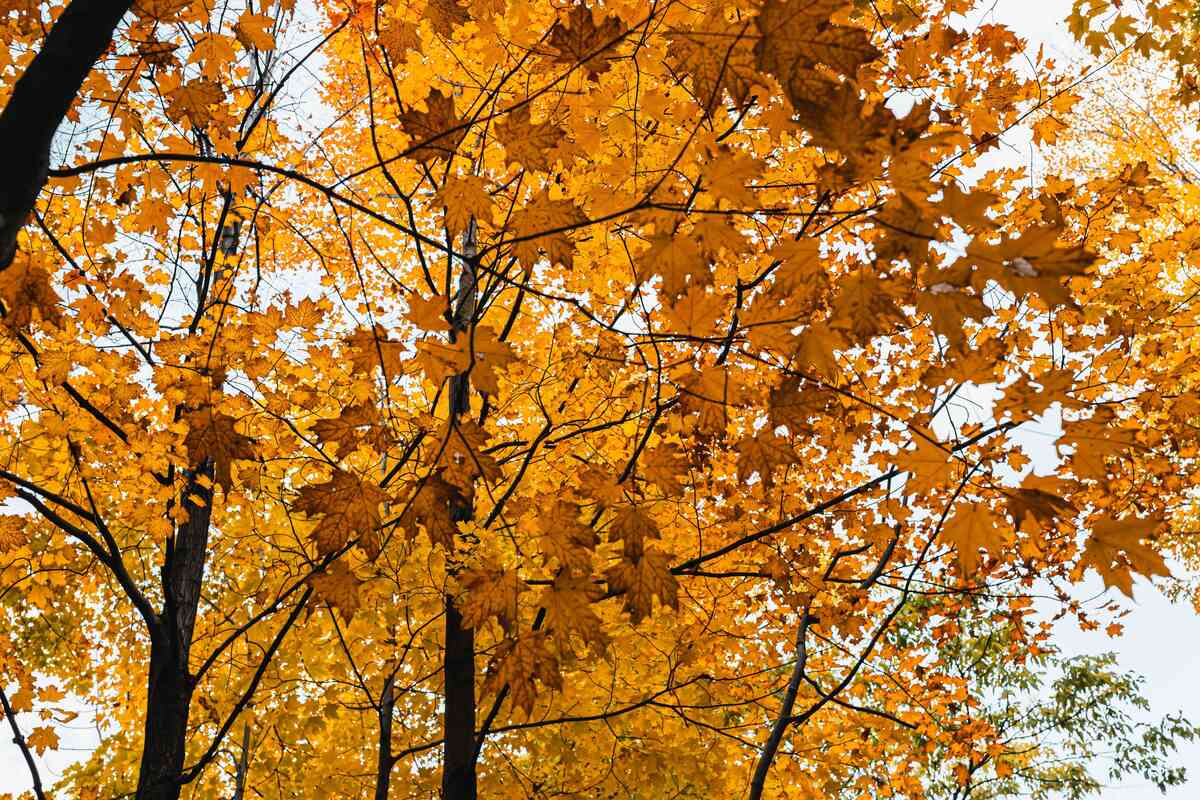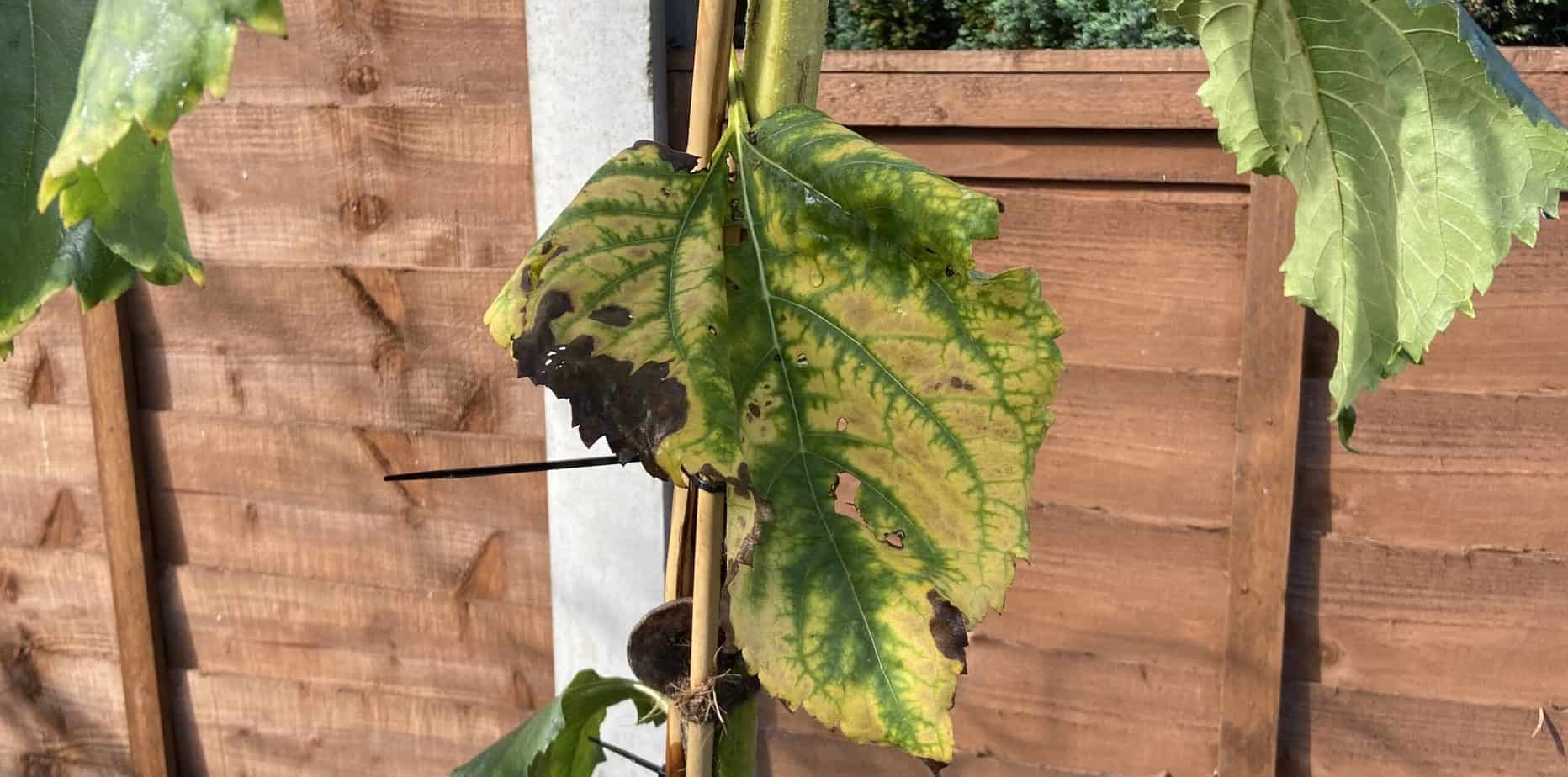Home>Types of Gardening>Ornamental Gardening>Why Do Deciduous Trees Lose Their Leaves In The Fall?


Ornamental Gardening
Why Do Deciduous Trees Lose Their Leaves In The Fall?
Modified: January 22, 2024
Discover the reasons why deciduous trees shed their leaves in autumn and learn about how to incorporate ornamental gardening into your landscape design.
(Many of the links in this article redirect to a specific reviewed product. Your purchase of these products through affiliate links helps to generate commission for Chicagolandgardening.com, at no extra cost. Learn more)
Table of Contents
Introduction
Welcome to the fascinating world of ornamental gardening! If you’re an enthusiast who loves to surround yourself with beauty and create a stunning outdoor oasis, you’ve come to the right place. In this comprehensive guide, we will delve into the intricate details of ornamental gardening, covering everything from plant selection and design principles to cultivation techniques and maintenance tips.
Ornamental gardening is the art of cultivating plants for aesthetic purposes. It involves creating visually appealing landscapes, whether in small urban gardens, spacious yards, or grand public parks. The focus is on enhancing the beauty of the surroundings by carefully selecting and arranging plants with different colors, textures, and forms.
Not only does ornamental gardening provide an opportunity to express creativity and personal style, but it also offers numerous practical benefits. By carefully choosing and placing plants, we can create shady spots to escape the summer heat, attract beneficial insects and birds, and even improve air quality in urban areas.
In this guide, we will explore the key aspects of ornamental gardening in detail. You will learn about the different types of plants that can be used, including flowers, shrubs, trees, and ornamental grasses. We will discuss how to choose the right plants for your specific climate and growing conditions, as well as how to create harmonious designs that blend color, texture, and height.
Furthermore, we will dive into cultivation techniques, such as soil preparation, planting, watering, and fertilizing. You will gain insights into effective pest and disease management strategies to ensure the health and vitality of your plants. We will also share tips on pruning, mulching, and other maintenance practices to keep your ornamental garden looking its best throughout the year.
Whether you are a seasoned gardener or just starting out, this guide will provide you with valuable information and inspiration to create your own slice of paradise. So, let’s embark on this exciting journey of exploration and creativity in the world of ornamental gardening.
Factors Influencing Leaf Loss in Deciduous Trees
As autumn approaches, deciduous trees undergo a stunning transformation, displaying a vibrant array of colors before shedding their leaves. But have you ever wondered why deciduous trees lose their leaves in the fall? There are several factors that influence this natural process.
1. Photoperiod: One of the main triggers for leaf loss in deciduous trees is the changing length of daylight. As the days shorten in the fall, the trees receive less sunlight. This decrease in light stimulates the production of hormones that signal the tree to prepare for dormancy and shed its leaves.
2. Temperature: Temperature fluctuations also play a significant role in deciduous trees’ leaf loss. As temperatures drop, the production of chlorophyll, the pigment responsible for the green color in leaves, slows down. This allows other pigments, such as red, orange, and yellow, to become more visible. Eventually, the chlorophyll breaks down, revealing the vibrant fall colors before the leaves are shed.
3. Moisture: Adequate moisture is crucial for trees to maintain healthy leaves. However, as fall progresses, the availability of water becomes limited. The combination of cooler temperatures and drier soil makes it difficult for trees to absorb and retain water. As a result, the tree initiates leaf shedding to conserve resources and prevent excessive water loss.
4. Nutrient Redistribution: Deciduous trees have a unique way of preserving valuable nutrients from their leaves before they fall. Prior to leaf loss, the tree reabsorbs nutrients, such as nitrogen and phosphorus, from the leaves and transports them back to the branches, trunk, and roots. This ensures that the tree retains essential nutrients for future growth and survival.
5. Genetic Factors: Different species of deciduous trees have evolved specific genetic characteristics that determine their leaf loss patterns. Some trees may shed their leaves relatively early in the fall, while others may hold onto their foliage for a longer duration. These genetic factors influence the timing and duration of leaf loss in different species.
By understanding the various factors that influence leaf loss in deciduous trees, we can appreciate the mechanisms behind this remarkable phenomenon. It is a reminder of nature’s balance and the trees’ ability to adapt to seasonal changes. As we witness the kaleidoscope of colors and the gentle fall of leaves, we can marvel at the intricate processes that occur in the natural world.
Environmental Triggers for Leaf Loss
Leaf loss in deciduous trees is not solely determined by internal factors within the tree. External environmental triggers also play a significant role in initiating the process of leaf shedding. Let’s explore some of the key environmental factors that contribute to this phenomenon.
1. Decreased Sunlight: As autumn arrives, the days become shorter, resulting in decreased sunlight exposure for deciduous trees. Sunlight is crucial for photosynthesis, the process by which trees convert light energy into food. When the days shorten, the reduced sunlight triggers a decrease in the production of chlorophyll, the green pigment responsible for capturing light energy. As a result, the leaves lose their green color and display the vibrant hues of fall before eventually being shed.
2. Lower Temperatures: Cooler temperatures in the fall season play a crucial role in triggering leaf loss. As temperatures drop, trees sense the change and begin the process of preparing for winter dormancy. This signals the tree to break down the chlorophyll molecules in the leaves, revealing the underlying pigments of red, orange, and yellow. The breakdown of chlorophyll not only leads to the vivid autumn colors but also triggers the detachment of the leaves from the branches.
3. Changes in Moisture Levels: The shift in seasons brings changes in moisture levels that impact leaf loss. During fall, the availability of moisture decreases as the soil becomes drier and the demand for water from the trees decreases. Trees respond to this change by actively sealing off the connection between the leaf stem and the branch, forming a protective layer called the abscission zone. This process ensures that the leaves receive fewer nutrients and water, prompting their eventual detachment.
4. Wind and Rain: Environmental elements such as wind and rain can also contribute to leaf loss in deciduous trees. Strong winds can physically detach leaves from the branches, especially when combined with the weakened connection due to the formation of the abscission zone. Rain, on the other hand, can accelerate the decomposition of the cellular tissue that aids in leaf detachment, hastening the process of leaf shedding.
5. Frost and Freezing Temperatures: In regions with colder climates, frost and freezing temperatures can expedite the leaf loss process. When leaves are exposed to freezing temperatures, ice crystals can form within the cells, causing damage. This damage impairs the leaf’s ability to function and, combined with other environmental factors, leads to an accelerated shedding of leaves.
Understanding the environmental triggers for leaf loss allows us to appreciate the intricate relationship between deciduous trees and their surroundings. As nature transitions to the autumn season, the combination of decreased sunlight, lower temperatures, changes in moisture levels, wind, rain, and freezing temperatures all contribute to the remarkable display of color and the gentle falling of leaves. It is a testament to the resilience and adaptability of these majestic trees in the face of changing environmental conditions.
Changes in Hormone Levels
Leaf loss in deciduous trees is not just a response to external environmental triggers; it is also controlled by internal factors, particularly changes in hormone levels. Hormones are chemical messengers within trees that regulate various physiological processes, including leaf shedding. Let’s explore the key hormones involved in this process and how their levels fluctuate during the fall season.
1. Abscisic Acid (ABA): Abscisic acid plays a crucial role in initiating and regulating the process of leaf shedding. As autumn approaches, the levels of ABA in deciduous trees increase. This hormone is known to inhibit the production of chlorophyll and promote the development of the abscission layer, a separation layer between the leaf petiole and the stem. The formation of the abscission layer leads to the eventual detachment of the leaf from the tree.
2. Auxins: Auxins are another group of hormones involved in the regulation of leaf loss. These hormones have a stimulatory effect on cell growth and elongation. During the fall, as the levels of auxins decrease, the growth of cells in the abscission layer slows down. This process weakens the connection between the leaf and the tree, facilitating leaf detachment.
3. Ethylene: Ethylene is a gaseous hormone that plays a crucial role in leaf shedding. As the days shorten and temperatures drop in the fall, the production of ethylene increases in deciduous trees. Ethylene promotes the breakdown of cellular components in the abscission layer, leading to the detachment of the leaf. It also inhibits the production of auxins, further weakening the connection between the leaf and the tree.
4. Cytokinins: Cytokinins are hormones that promote cell division and delay senescence, the aging process in plants. During the fall season, levels of cytokinins decrease in deciduous trees. This decline in cytokinins further promotes leaf senescence and accelerates the process of leaf shedding.
5. Gibberellins: Gibberellins are hormones that regulate plant growth and development. In deciduous trees, the levels of gibberellins decrease during the fall, contributing to leaf loss. This hormone’s reduction leads to the breakdown of chlorophyll and the gradual deterioration of the leaf tissues, facilitating the eventual detachment of the leaf from the tree.
The interplay of these hormones orchestrates the process of leaf shedding in deciduous trees. As autumn sets in and environmental cues signal the trees to prepare for dormancy, changes in hormone levels initiate the physiological responses that lead to leaf loss. It is a beautifully coordinated dance of chemical messengers, ensuring that the trees conserve resources and enter a period of rest and rejuvenation during the winter months.
The Process of Leaf Abscission
Leaf abscission is the process by which deciduous trees shed their leaves in preparation for winter dormancy. It is a carefully orchestrated sequence of events that involves the activation of specific cellular and molecular mechanisms. Let’s explore the key steps of leaf abscission and understand how this process unfolds.
1. Formation of the Abscission Layer: The first step in leaf abscission is the formation of the abscission layer, also known as the separation layer. This layer develops at the base of the leaf petiole, where it connects to the stem. As autumn arrives, hormones like abscisic acid accumulate, triggering the development of this layer. The abscission layer contains specialized cells that weaken cell-to-cell adhesion and form a physical barrier, preparing the leaf for detachment.
2. Breakdown of Cellular Components: Once the abscission layer is formed, a series of cellular changes occur, leading to the breakdown of cellular components. Specialized cells in the abscission layer produce enzymes that degrade the cell wall, pectin, and other components, loosening the connection between the leaf and the stem. This breakdown of cellular components allows the leaf to separate easily from the tree.
3. Synthesis and Release of Ethylene: Ethylene, a gaseous hormone, plays a crucial role in leaf abscission. As the abscission layer develops, it produces ethylene, which further promotes cell separation. Ethylene triggers a cascade of biochemical reactions, activating enzymes that break down proteins and cell walls in the abscission zone. This process weakens the attachment of the leaf to the stem and facilitates detachment.
4. Closure of Vascular Bundles: As leaf abscission progresses, the vascular bundles that transport nutrients and water to the leaf are gradually sealed off. This closure prevents the flow of essential resources to the leaf, ensuring that the tree retains these valuable nutrients for its future growth and survival.
5. Leaf Detachment: Finally, after the abscission layer has formed, cellular components have broken down, ethylene has been released, and vascular bundles are closed, the leaf is ready for detachment. External factors such as wind or rain can further facilitate leaf shedding by physically dislodging the weakened leaf from the tree. The process of leaf detachment is typically gentle and gradual, allowing the tree to conserve energy and resources during this transition.
The process of leaf abscission is a marvel of biological adaptation, allowing deciduous trees to shed their leaves and conserve resources during the dormant winter months. It is a testament to the incredible precision and coordination of cellular and molecular mechanisms within plants. As we witness the gentle falling of leaves in the autumn season, we can appreciate the intricate processes that enable trees to prepare for winter and ensure their survival in changing environmental conditions.
Physiological Benefits of Leaf Shedding
Leaf shedding, a natural process in deciduous trees, offers several physiological benefits that contribute to the overall health and survival of these trees. Although it may seem like a loss, the shedding of leaves serves important purposes. Let’s explore some of the key physiological benefits of leaf shedding.
1. Water Conservation: One of the primary benefits of leaf shedding is water conservation. During the fall and winter seasons, water availability can be limited. By shedding leaves, deciduous trees reduce the surface area through which water is lost through transpiration. This conserves precious water resources and allows the trees to survive during periods of drought.
2. Nutrient Recycling: Deciduous trees strategically withdraw nutrients from their leaves before shedding them. Nutrients such as nitrogen, phosphorus, and potassium are reabsorbed from the leaves and transported back into the branches, trunk, and roots. This nutrient recycling ensures that the tree retains valuable resources, promoting its overall health and enabling vigorous growth when spring arrives.
3. Protection from Extreme Conditions: Leaf shedding provides protection to trees during harsh environmental conditions. In areas with cold winters, dropping leaves helps trees conserve energy by reducing the surface exposure to freezing temperatures and icy conditions. By shedding their leaves, trees also minimize the risk of damage caused by heavy snow, ice accumulation, and strong winds.
4. Disease and Pest Management: Leaf shedding helps in disease and pest management. By shedding leaves, trees remove potential sources of pathogens and overwintering sites for pests. This reduces the risk of disease transmission and limits pest populations, ultimately improving the tree’s overall health and reducing the need for chemical interventions.
5. Resource Allocation: Leaf shedding allows trees to reallocate resources efficiently. As leaves senesce and prepare to shed, the tree withdraws nutrients and energy from them. These resources are then stored in the tree’s woody tissues and roots, providing essential reserves for future growth and development when conditions become favorable again.
Leaf shedding in deciduous trees is a remarkable adaptation that ensures their survival in changing seasons and challenging environments. By conserving water, recycling nutrients, providing physical protection, managing disease and pests, and reallocating resources, leaf shedding allows trees to thrive and thrive again when the time is right. It is a testament to the resilience and resourcefulness of nature’s design.
Adaptations of Deciduous Trees for Winter Survival
Deciduous trees have evolved several remarkable adaptations to survive the harsh conditions of winter. These adaptations ensure their long-term survival by protecting essential structures and conserving necessary resources. Let’s explore some of the key adaptations that enable deciduous trees to thrive during the winter season.
1. Leaf Shedding: The most notable adaptation of deciduous trees for winter survival is the shedding of leaves. As the days become shorter and temperatures drop, deciduous trees drop their leaves to conserve water and reduce exposure to freezing temperatures. This allows the trees to enter a state of dormancy and conserve energy during the winter months.
2. Bark Protection: The bark of deciduous trees serves as a protective layer against cold temperatures, frost, and physical damage. The outer layers of the bark are composed of dead cells that provide insulation and prevent water loss. Additionally, some species have thicker bark, which offers enhanced protection against freezing temperatures and helps ward off potential pests and diseases.
3. Deep Root Systems: Deciduous trees often have deep root systems that allow them to access water and nutrients during winter, even when the surface soil is frozen or dry. These deep roots enable the trees to maintain their physiological processes and provide support against strong winds and snow accumulation.
4. Energy Storage in Roots: To survive winter, deciduous trees store energy reserves in their roots before leaf shedding. These energy reserves, in the form of carbohydrates, provide a vital source of fuel for the tree during periods of limited photosynthesis. The stored carbohydrates enable the tree to kick-start growth and leaf production when spring arrives.
5. Dormant Buds: Deciduous trees develop dormant buds in the axils of their leaves. These buds contain specialized tissues that are protected by bud scales. During winter, when photosynthesis is limited or nonexistent, these dormant buds remain in a state of rest, ready to sprout new growth when the conditions become favorable again.
6. Anti-freeze Proteins: Some deciduous trees produce anti-freeze proteins that allow them to tolerate freezing temperatures. These proteins lower the freezing point of tree tissues, preventing ice crystals from forming and damaging cells. This adaptation enables these trees to survive extreme cold without detrimental effects.
By shedding leaves, protecting their bark, establishing deep root systems, storing energy in roots, developing dormant buds, and producing anti-freeze proteins, deciduous trees have evolved a range of adaptations that allow them to successfully endure the challenging winter conditions. These adaptations ensure their survival and enable them to flourish when spring arrives with its warmer temperatures and renewed opportunities for growth.
Conclusion
Ornamental gardening is more than just a hobby; it is a way to create beauty, bring nature closer to our homes, and find solace in the natural world. Through careful plant selection, design principles, and cultivation techniques, we can transform our outdoor spaces into stunning landscapes that inspire and rejuvenate.
In this comprehensive guide, we have explored the various aspects of ornamental gardening, from choosing the right plants and creating harmonious designs to maintaining the health and vitality of our gardens. We have delved into the factors influencing leaf loss in deciduous trees, the environmental triggers for this process, and the physiological benefits that emerge from leaf shedding.
We have also learned about the adaptations of deciduous trees for winter survival, and how these remarkable strategies ensure their long-term survival and prepare them for the challenges of the colder months.
Ornamental gardening offers us a chance to connect with nature, express our creativity, and create a personal haven that showcases the beauty and resilience of the natural world. It is a journey of exploration, learning, and stewardship as we nurture our plants and cultivate a space that brings us joy and serenity.
As you embark on your own ornamental gardening adventure, remember to embrace the principles of sustainability and environmental stewardship. Choose native plants, conserve water, encourage beneficial insects and pollinators, and minimize the use of chemicals to create a garden that not only captures the eye but also supports and sustains the delicate balance of the ecosystem.
So, roll up your sleeves, put on your gardening gloves, and let your creativity bloom. With the knowledge and techniques you have gained from this guide, you are well-equipped to create a stunning and vibrant ornamental garden that will delight and inspire you for years to come. Happy gardening!









